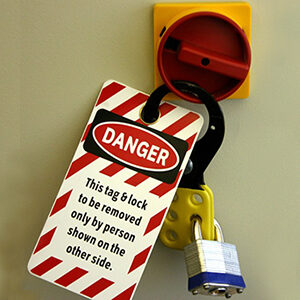First published by Safety+Health an NSC publication

Washington — Pointing to OSHA guidance citing “the significant risks associated with inadequate energy control procedures or the failure to properly implement them,” NIOSH is reminding employers that OSHA’s standard on lockout/tagout (1910.147) requires them to conduct an inspection of written hazardous energy control procedures at least once a year.
In fiscal year 2021, lockout/tagout ranked sixth on OSHA’S Top 10 list of most frequently cited standards, with 1,670 total violations, according to preliminary OSHA Information System data.
Within the standard, 1910.147(c)(6) – “periodic inspection” – was the third most frequently cited section, with 255 violations. In fourth, with 162 violations, was 1910.147(c)(1), which reads: “The employer shall establish a program consisting of energy control procedures, employee training and periodic inspections to ensure before any employee performs any servicing or maintenance on a machine or equipment where the unexpected energizing, startup or release of stored energy could occur and cause injury, the machine or equipment shall be isolated from the energy source and rendered inoperable.”
NIOSH offers tips and reminders for developing and maintaining a lockout/tagout program:
- Include in written energy control procedures elements such as the scope of procedures; intended purpose; names of authorized personnel; rules for shift change, transfer of locks, etc.; and specific methods used to control hazardous energy.
- A periodic inspection must include a demonstration of the procedures and be conducted while the authorized employee performs service/maintenance on a machine/equipment.
- Each energy control procedure must be separately inspected to ensure the procedure is adequate and properly implemented by the authorized employee.
- The inspector must be a lockout/tagout-authorized employee who is knowledgeable and isn’t currently performing lockout/tagout on the energy control procedure under inspection.
- The inspector can’t implement any part of the procedure during the inspection, and must observe the implementation of the lockout/tagout procedure for the equipment or machine being evaluated and speak with at least one authorized employee who is implementing the procedure to ensure they understand the procedure.
- If the periodic inspection process reveals deviations from the written procedures or inadequacies in an employee’s knowledge of procedures, the employee must be retrained.
A NIOSH guidance document features recent case studies that detail separate workplace fatalities related to improper lockout/tagout processes.
McCraren Compliance offers many opportunities in safety training to help circumvent accidents. Please take a moment to visit our calendar of classes to see what we can do to help your safety measures from training to consulting.